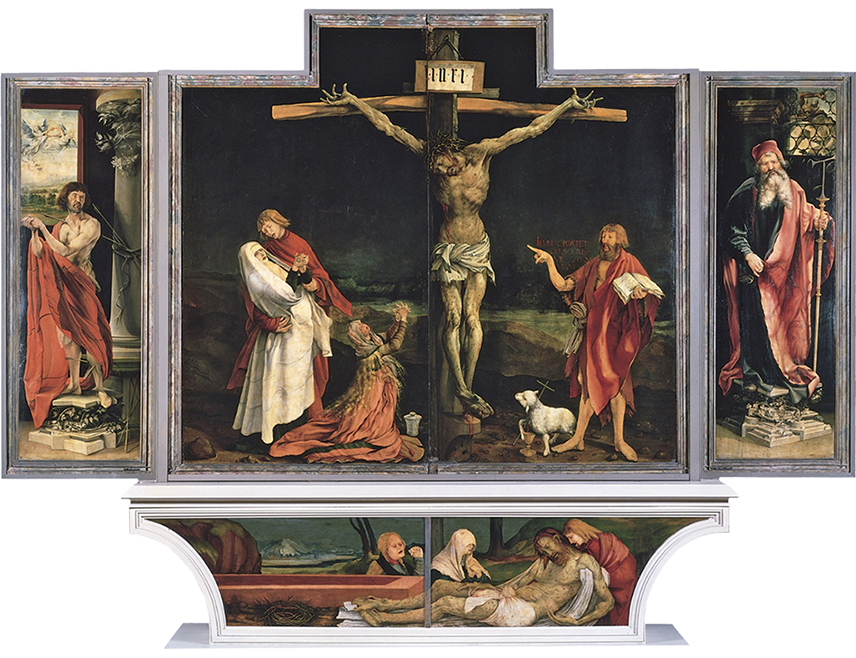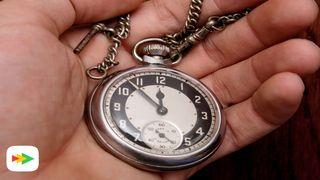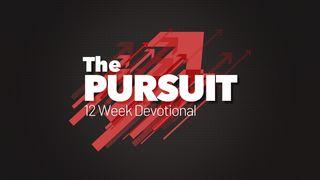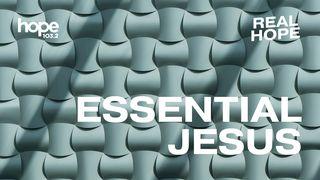Last Words: A Lenten Meditation on the Final Sayings of Christ, Week 5Sample

He Was Wounded for Our Transgressions


Isenheim Altarpiece, Three close-ups of the crucifixion wounds of Christ, Matthias Grünewald, 1512–1516. Overall dimensions of the Isenheim Altarpiece: H. 376 cm x L. 534 cm. Musée Unterlinden, Colmar, Alsace, France.
“Surely He Hath Borne Our Griefs and Carried Our Sorrows” from the album The New Young Messiah. Composed by George Frederic Handel. Performed by Mark English, Larnelle Harris, and Steve Green.
Poetry:
“Guilt”
by Lisa Gorton
With this hand I shut out the sun
and with my left, for little money,
sold the treasure of my heart.
Now I walk its poverty
down wheedling ways and dark,
and all my words of truth are gilt
and all they touch they tarnish.
My truth is burned and beaten out
to small designs of loneliness.
Where is my help
when the sun that warmed
the gardens of my innocence
is now an eye that burns me
with the shame of my offence?
HE WAS WOUNDED FOR OUR TRANSGRESSIONS
In my Gospel, Kingdom, and Culture class, we memorize the Two Ways to Live outline of the gospel. In 2 of its 6 panels it draws on Isaiah 53:6. When authors Philip Jensen and Tony Payne focus, in panel 2, on our rejection of God as our ruler and our rebellion against his way, they call on Isa. 53:6a. "We have all, like sheep gone astray, each of us has turned to our own way…” Reading Lisa Gorton’s poem, “Guilt,” in conjunction with today’s other offerings allows me to see the speaker’s heart treasure sold cheaply while deliberately blocking out the sun, as if hiding the transaction in shadow. The same sun that once shone on innocence now cannot but expose the shame of the offence the speaker regrets. Whatever truth the impoverished heart can muster wheedles its way in the dark. That tarnished truth merely musters the allure of gilt rather than the glistening gold of the sun. Understandably, the speaker asks, ‘Where is my help?’
Scripture gives us an answer. God sends his Son, the anointed one, as the suffering servant. In the words of theologian, Dietrich Bonhoeffer, Jesus is our vicarious representative. He is our substitute, propitiating the holy wrath of God and satisfying his righteous judgment. He is the atoning offering for sin. This is the truth that can, the person who can overcome the guilt. This is what the speaker of the poem hopes for.
So, in the face of the failure and shame of human sin, it is a glorious feature of this passage from Isaiah, and verse 6 in particular, that Jensen and Payne can turn back to and fill out for their panel 4: “but He has laid on him the iniquities of us all.” Because of his love, God sent his Son into the world, the man Jesus Christ. Jesus always lived under God’s rule. But Jesus took our punishment by dying in our place.”
Artist Matthias Grünewald’s Isenheim Altarpiece captures the physical burden of this substitutionary logic. We see in Jesus’s figure on the cross our sorrows that afflicted him with grief. The Altarpiece was painted for St. Anthony’s Monastery, in the historically contested territory of Alsace, to the east of France and the west of Germany. The monks had a special ministry to care for the diseased and plagued. Jesus’s crucified body, emaciated, visibly scarred and pocked, conveys his representation of those who would look upon the altar. That particularity, however is meant to speak inclusively and not exclusively. It serves to demonstrate a representative truth deeper than the skin level bearing of their disease. Isaiah sees ahead to the Apostle’s words that this anointed one, Christ, would become a curse for us in order to redeem us. He would bear the human disease of lawlessness and condemnation. So that we might ‘receive the promise of the Spirit by faith.’
Peace is what our representative, Jesus, achieves by taking our punishment and curse. Peace is what we need for we are alienated from God in our rebellion. And so, we look steadfastly, and with grim irony and cheerful contrition, on the one whom, in our sin, we despised, and from whom we hid our faces.The New Young Messiah that we listen to today re-tells an updated setting Handel’s masterpiece. It reminds us that a Hallelujah is coming, but for now we contemplate the sufferings of our savior in our stead. Whether we contemplate this truth in our own suffering, our own caught-upness in disease, violence, and abuse, or whether we do so in comfort amid wealth, we are called to recognition of our complicity in the sin that Jesus bears on the cross, so that each of us can cry out with the poem, ‘Where is my help?’ What a mercy that we know the Psalmist’s answer: “My help comes from the Lord” (Psalm 121:2)
Prayer:
Lord, help us to look to you in your suffering.
Help us to see your costly love.
Help us to recognize our sin,
And lead us by your Holy Spirit in repentance into life and peace,
Amen
Dr. Andy Draycott
Professor of Theology,
Talbot School of Theology
Biola University
Scripture
About this Plan

The Lent Project is an initiative of Biola University's Center for Christianity, Culture and the Arts. Each daily devotion includes a portion of Scripture, a devotional, a prayer, a work of visual art or a video, a piece of music, and a poem plus brief commentaries on the artworks and artists. The Seven Last Words of Christ refers to the seven short phrases uttered by Jesus on the cross, as gathered from the four Christian gospels. This devotional project connects word, image, voice and song into daily meditations on these words.
More
We would like to thank Biola University for providing this plan. For more information, please visit: https://ccca.biola.edu/lent/2025









